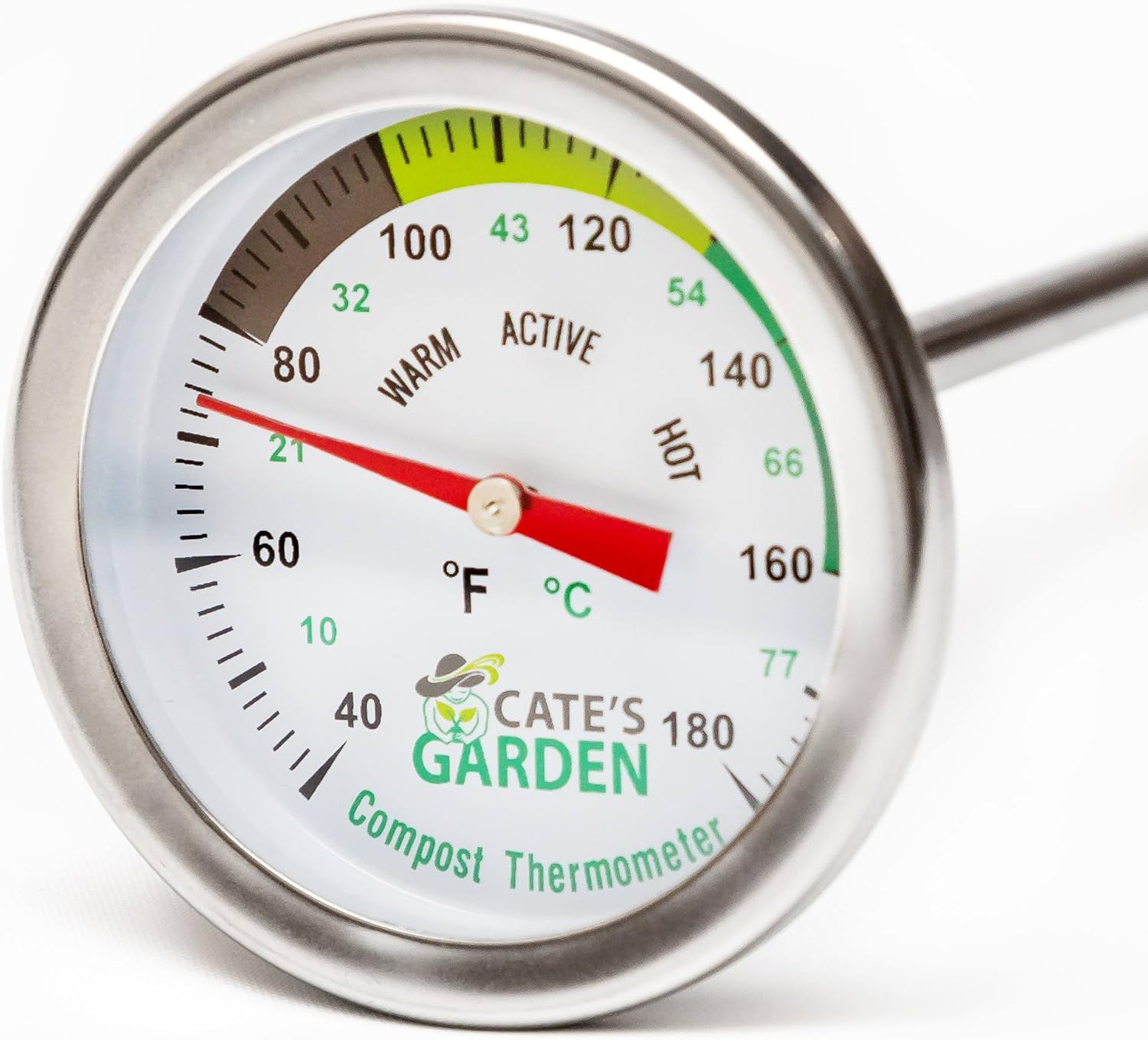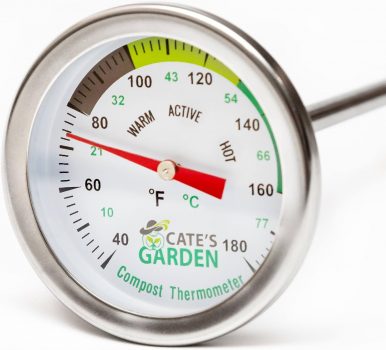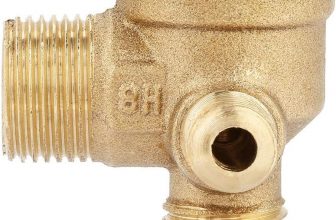
Understanding the internal environment of your compost pile is crucial for successful composting. The Cate’s Garden Compost Thermometer offers an effective way to measure temperature, ensuring your materials decompose efficiently. This article dives in-depth into the features of this thermometer, its benefits, and how it can transform your composting experience.
Product Features
| Feature | Description |
|---|---|
| Product Name | Cate’s Garden Premium Compost Thermometer |
| Material | 304-grade rust-resistant stainless steel |
| Dial Size | 2 inches with Fahrenheit and Celsius measurements |
| Probe Length | 20 inches for deep readings |
| Temperature Range | 40 to 180°F (4 to 82°C) |
| Water Resistance | IP55 rating for moisture protection |
| Read Time | Approximately 30 seconds |
Product Overview
| Pros |
|---|
| Fast and accurate temperature readings |
| Long probe allows for deep measurement |
| Easy-to-read color-coded dial |
| Sturdy design withstands harsh conditions |
| Cons |
|---|
| Temperature readings may need calibration over time |
| Long-term outdoor exposure could affect lifespan |
Understanding the Importance of Temperature in Composting
When it comes to mastering effective composting, utilizing the Cate’s Garden Compost Thermometer is key. To get started, insert the thermometer into the compost pile, ensuring it’s placed in the center where temperatures are most representative of the entire batch. I typically recommend pushing it in to a depth of about 12 inches. This positioning allows for accurate readings, capturing the heat generated by microbial activity.
Once the thermometer is secured in place, take a moment to read the dial. It’s crucial to understand the temperature ranges indicated. For instance, a range of 120°F to 160°F signifies optimal composting conditions where microbes thrive, efficiently breaking down organic materials. If the temperature dips below this range, microbial activity may slow down, impacting your compost quality. Conversely, if it exceeds 160°F, temperatures could become too hot, killing beneficial microbes and stalling the composting process.
To maintain the accuracy of your thermometer, routinely check for any dirt or debris on the dial and clean it gently. Always recalibrate if you notice discrepancies. Remember, paying close attention to these temperature insights can significantly enhance composting efficiency. It’s a simple but effective way to ensure you get the most nutrient-rich compost possible from your efforts. By being proactive with temperature management, you’re setting the stage for successful composting and lush, healthy gardens.
Using the Cate’s Garden Thermometer for Optimal Composting
Using the Cate’s Garden Thermometer for Optimal Composting:
To maximize your composting efforts, utilizing the Cate’s Garden Compost Thermometer is essential. First, insert the thermometer into your compost pile. Aim for the center where decomposition is most active. Ensure that the probe is buried at least six to eight inches deep. This depth ensures that the reading reflects the internal conditions rather than just the surface temperature.
Reading the dial is straightforward. The thermometer typically features a clear display with temperature ranges that indicate different phases of composting. A reading between 130°F and 160°F shows that microbial activity is thriving. If you notice temperatures above 170°F, it signals that your compost might be getting too hot, which can kill beneficial microorganisms. Conversely, if temperatures drop below 100°F, it may indicate a lack of activity, suggesting a need to aerate or add nitrogen-rich materials.
To maintain your thermometer, clean the probe after each use to avoid contamination and ensure accurate readings on your next check. Periodically calibrate it as per the manufacturer’s instructions. By monitoring the compost temperature, I can adjust materials and aeration strategies as needed, promoting efficient decomposition. Engaging with temperature insights empowers me to maintain a thriving compost ecosystem, turning organic waste into nutrient-rich soil effectively.
Conclusions
In summary, the Cate’s Garden Compost Thermometer is an indispensable tool for any compost enthusiast. By aiding in the understanding of your pile’s temperature, it ensures efficient decomposition and enhances the quality of your homemade compost. Investing in this thermometer translates directly into healthier soil and thriving gardens.








